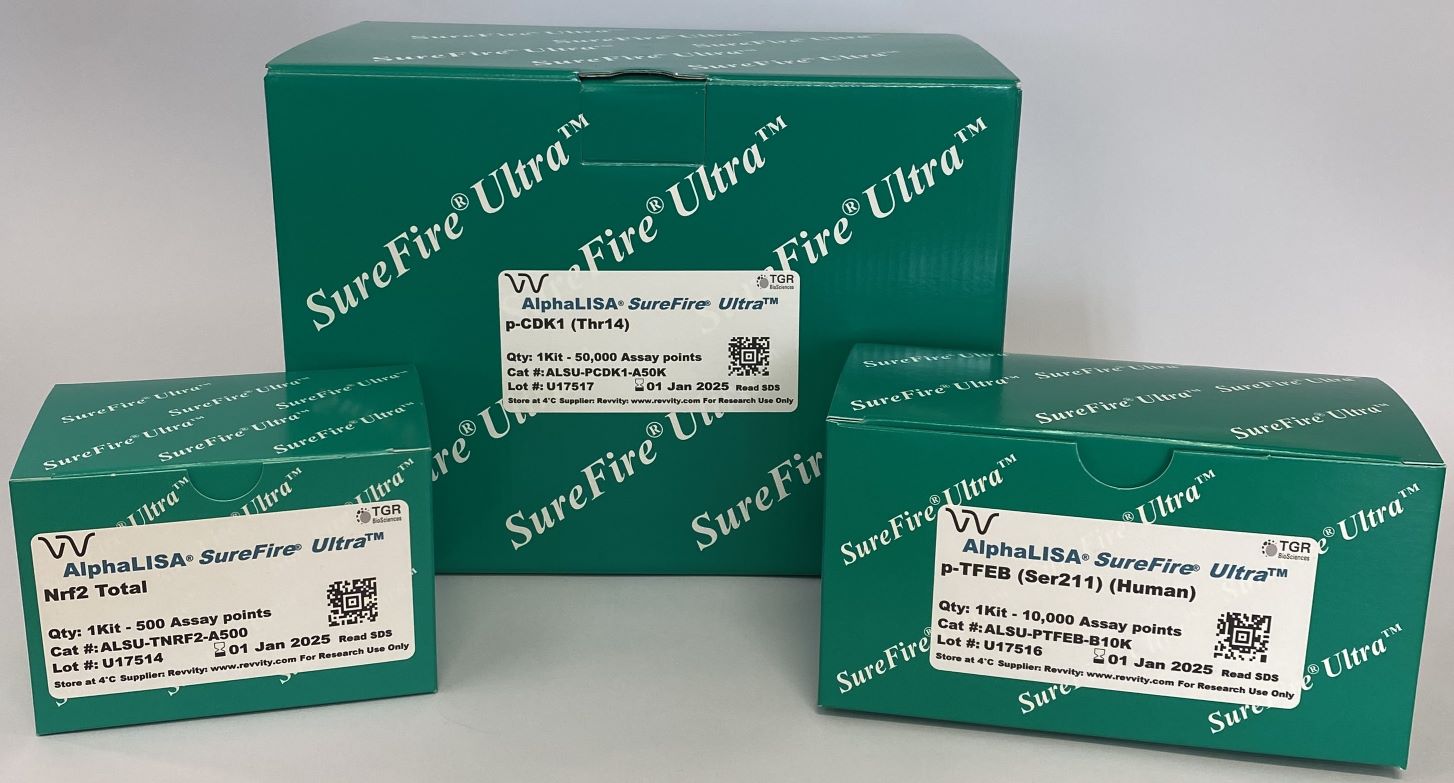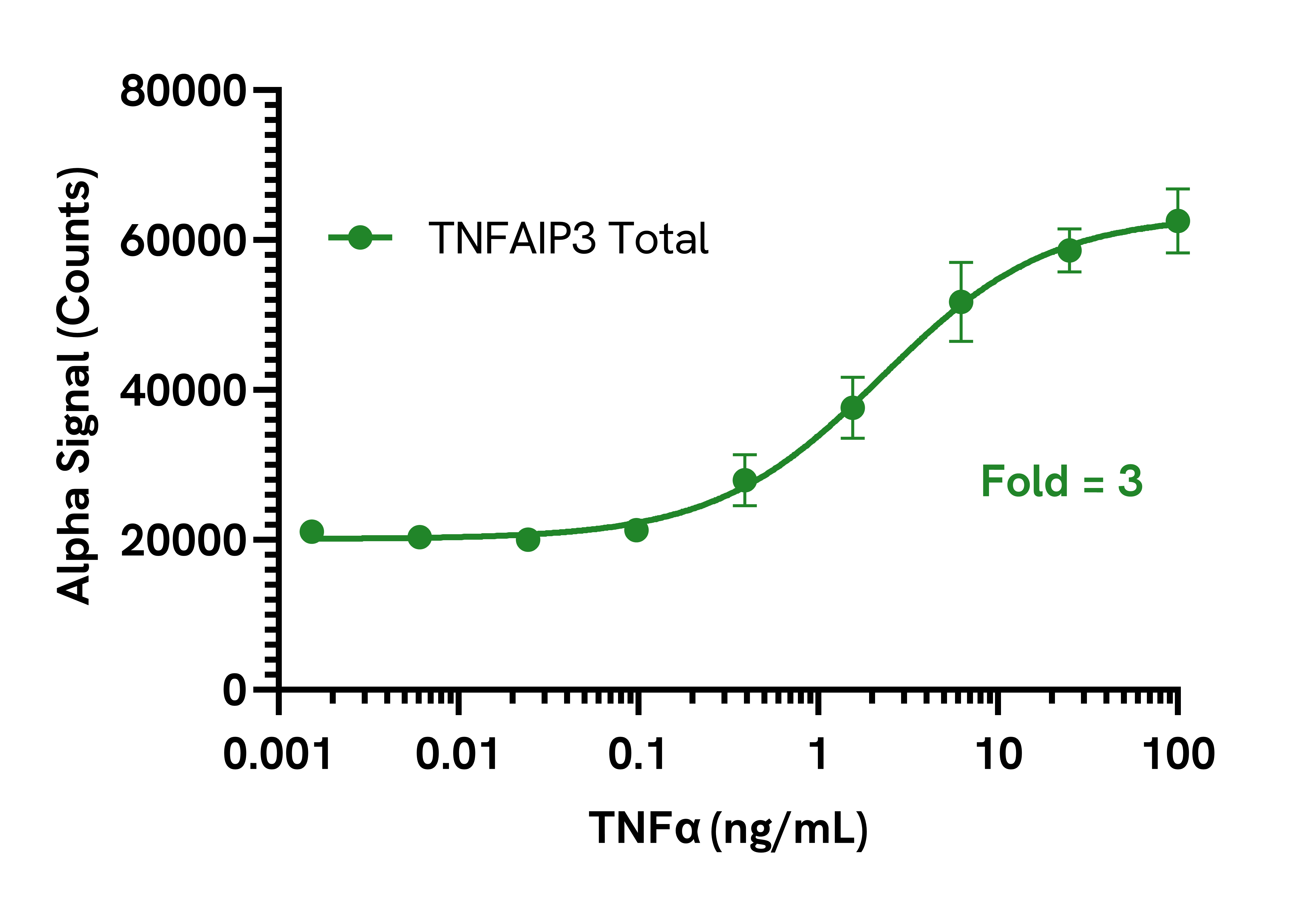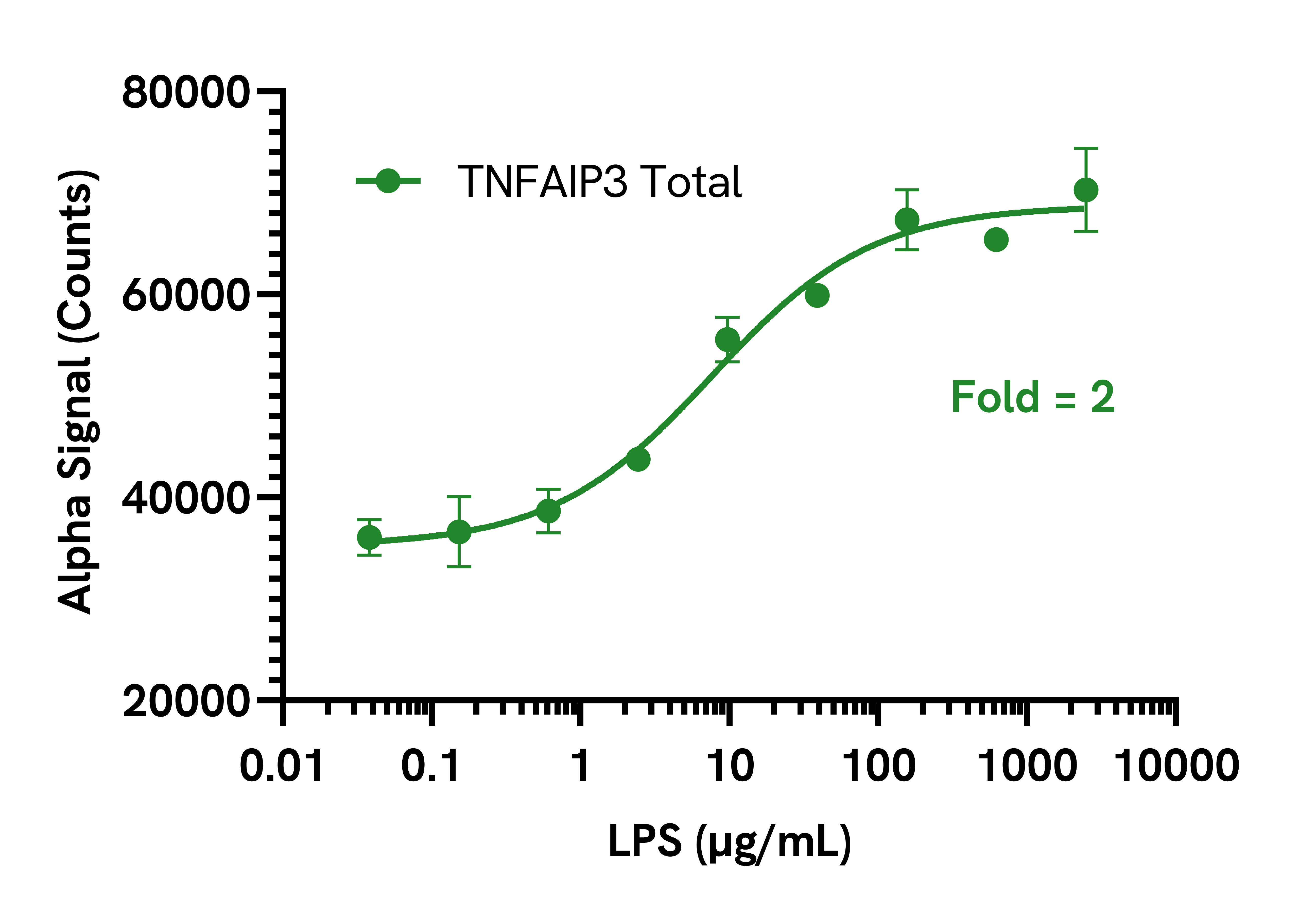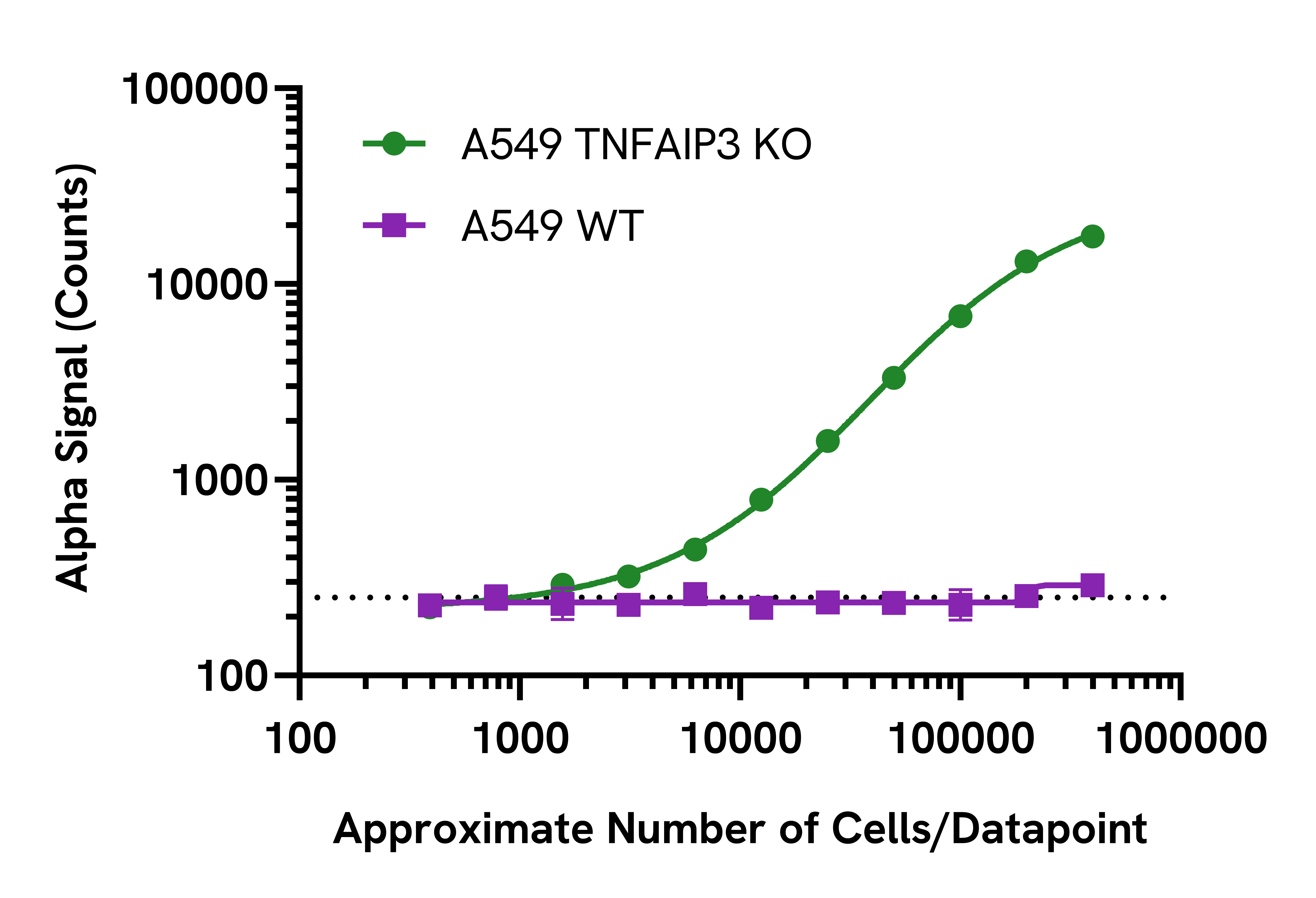Assay points.
-
ALSU-TTNFA-A500
500
-
ALSU-TTNFA-A10K
10,000
-
ALSU-TTNFA-A50K
50,000
-
ALSU-TTNFA-A-HV
100
Assay Principle
The AlphaLISA™ SureFire® Ultra™ assay enables the rapid and sensitive detection of total and phosphorylated cellular proteins. AlphaLISA™ assays utilize two bead types: Acceptor Beads and Donor Beads. The Acceptor Bead is coated with a proprietary CaptSure™ agent to specifically immobilize the assay specific antibody which is labeled with a CaptSure™ tag. The Donor Bead is coated with streptavidin to capture the biotinylated antibody.
In the presence of a target protein, the two target-specific antibodies bring Donor and Acceptor Beads into close proximity. When the Donor Beads are activated by a laser (680 nm), singlet oxygen is transferred to the Acceptor Bead leading to the production of an Alpha signal. The amount of light emission (615 nm) from the Acceptor Bead is directly proportional to the amount of target protein present in the sample. If an Acceptor Bead is not in close proximity (i.e. 200 nm) of a Donor bead, little to no signal is produced over background.
The assay can be executed in a 1-plate or 2-plate assay protocol (Refer to Manual for more details).
1-plate assay protocol: culturing of cells, treatment, lysis and assay are performed in a single well, enabling miniaturization in high throughput screening programs.
2-plate assay protocol: cells are cultured and treated in a 96-well culture plate and lysates are then transferred into a separate plate for assay. This format allows the evaluation of multiple targets from a single lysate.
Technical Specific Data
Data obtained with a 2-plate, 2-incubation protocol. HeLa cells were seeded at 40K cells/well and incubated overnight. Cells were treated with TNFα at the indicated concentrations for 5 hours. Cells were lysed with Lysis Buffer and assayed for Total TNFAIP3 using the SureFire® Ultra™ kit. Equivalent to approximately 6,000 cells/datapoint.
Data obtained with a 2-plate, 2-incubation protocol. THP-1 cells were seeded at 50K cells/well in a 96 well plate in complete RPMI 1640 medium containing 100 nM PMA for 24 hours. Cells were treated with LPS at the indicated concentrations for 24 hours. Cells were washed with HBSS, lysed with Lysis Buffer and assayed for Total TNFAIP3 using the SureFire® Ultra™ kit. Equivalent to approximately 2,500 cells/datapoint.
Data obtained with a 2-plate, 2-incubation protocol. A549 (WT) or TNFAIP3 knockout (KO, Abcam ab266946) cells were cultured to confluency in T175 flasks and lysed with 4 mL of Lysis Buffer. Lysates were serially diluted with Lysis Buffer and assayed for TNFAIP3 Total using the SureFire® Ultra™ kit. Approximate number of cells/datapoint is indicated.
Data obtained from measurement of TNFAIP3 in various cell types lysed with Lysis Buffer. Equivalent to approximately 4,000 cells/datapoint (adherent cells) or 40,000 cells/datapoint (suspension cells).
Manuals & downloads.
-
PDF
-
PDF
Detection Kit Manual
-
Tech Spec
Technical Data Sheet
Safety Data Sheets
-
Safety Data Sheet (SDS)
Safety Data Sheet EU-EN
-
Safety Data Sheet (SDS)
Safety Data Sheet US




